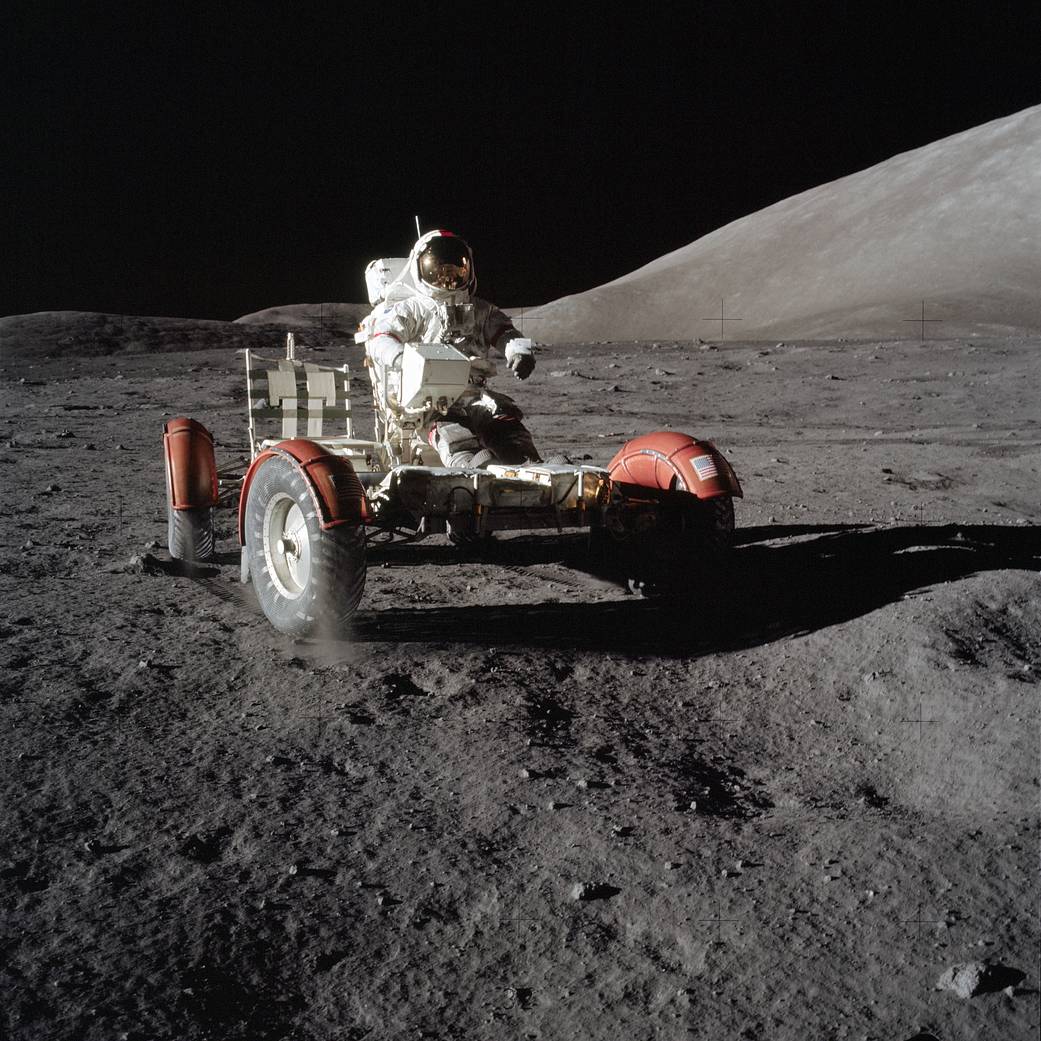This week in 1972, Apollo 17 landed on the lunar surface and became the third and final mission to employ the Lunar Roving Vehicle – a lightweight, electric vehicle designed to operate in the low-gravity vacuum of the Moon. It allowed Apollo astronauts to extend the range of their moonwalks. Here, astronaut Eugene Cernan, Apollo 17 commander, makes a short checkout of the Lunar Roving Vehicle during the early part of the first Apollo 17 moonwalk at the Taurus-Littrow landing site. Today, NASA’s Marshall Space Flight Center is playing a vital role in the Artemis program by developing the Space Launch System, the backbone of NASA’s exploration plans and the only rocket capable of sending humans to the Moon and Mars. The NASA History Program is responsible for generating, disseminating, and preserving NASA’s remarkable history and providing a comprehensive understanding of the institutional, cultural, social, political, economic, technological, and scientific aspects of NASA’s activities in aeronautics and space. For more pictures like this one and to connect to NASA’s history, visit the Marshall History Program’s webpage. (NASA)
1 min read

























